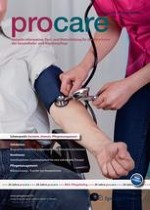Anzeige
01.12.2015 | geriatrie
Krafttraining wirkt!
Gebrechlichkeit aus rehabilitativer Sicht
Erschienen in: ProCare | Ausgabe 10/2015
Einloggen, um Zugang zu erhaltenZusammenfassung
Hintergrund
Das Syndrom der Gebrechlichkeit stellt eine zunehmende Herausforderung für das Gesundheitssystem dar. Wenngleich es zum Lebensende auftritt, sollten rehabilitative Interventionen ergriffen werden, um das Syndrom zu verhindern oder zu verlangsamen.
Methode
Auf Basis der Definitionen für Gebrechlichkeit sowie für Rehabilitation gibt die vorliegende Arbeit einen Überblick zu den gegenwärtigen Therapiemöglichkeiten. Geräteunterstützte Trainingsformen wie die neuromuskuläre Elektrostimulation oder die mechanische Muskelstimulation werden in Methodik und Evidenz dargestellt. Der Einsatz unterschiedlicher Trainingsformen bei gebrechlichen Patienten wird kritisch untersucht.
Ergebnisse
Unter anderem spielen die alters- und krankheitsbedingten Veränderungen der Skelettmuskulatur bei der Entwicklung der Gebrechlichkeit eine zentrale Rolle. Die evidenzbasierte Intervention ist das fortlaufend angepasste Krafttraining. Da diese Form des Krafttrainings v. a. für alte und gebrechliche Menschen eine körperliche Belastung darstellen kann, bieten sich alternative Trainingsformen an.
